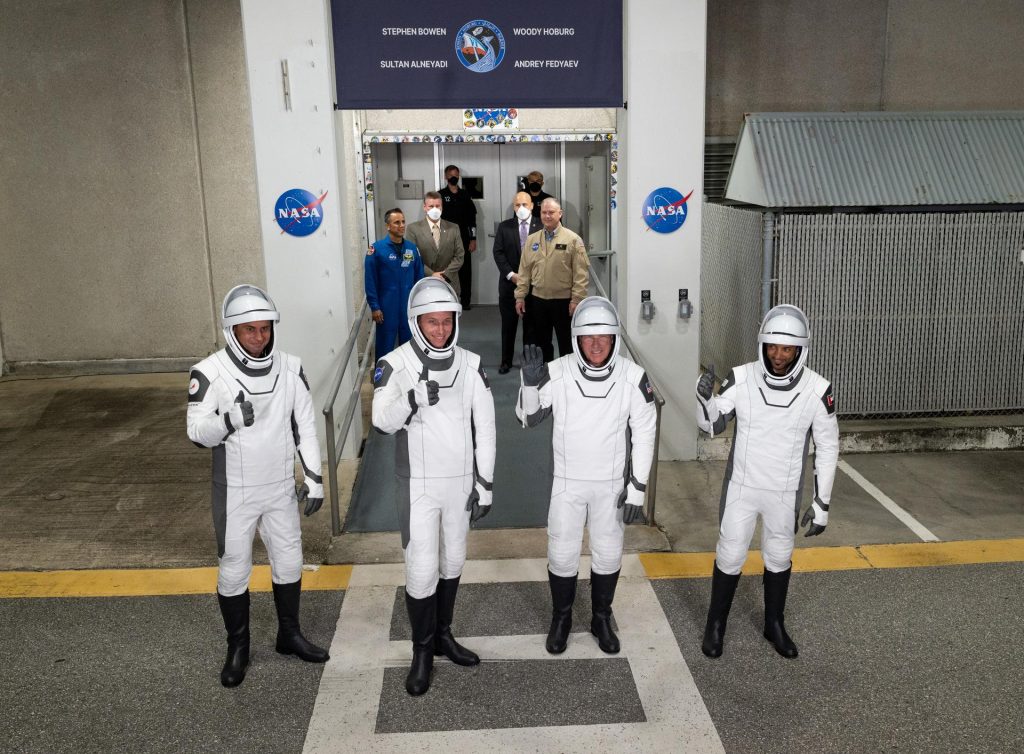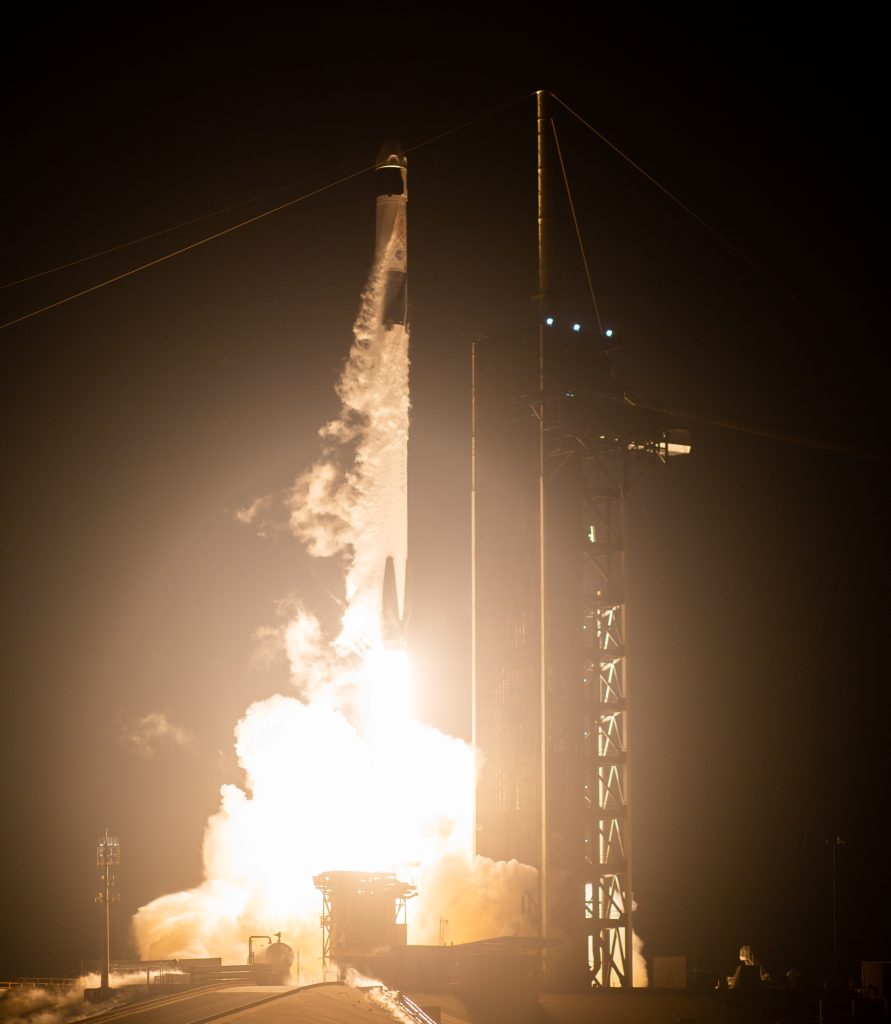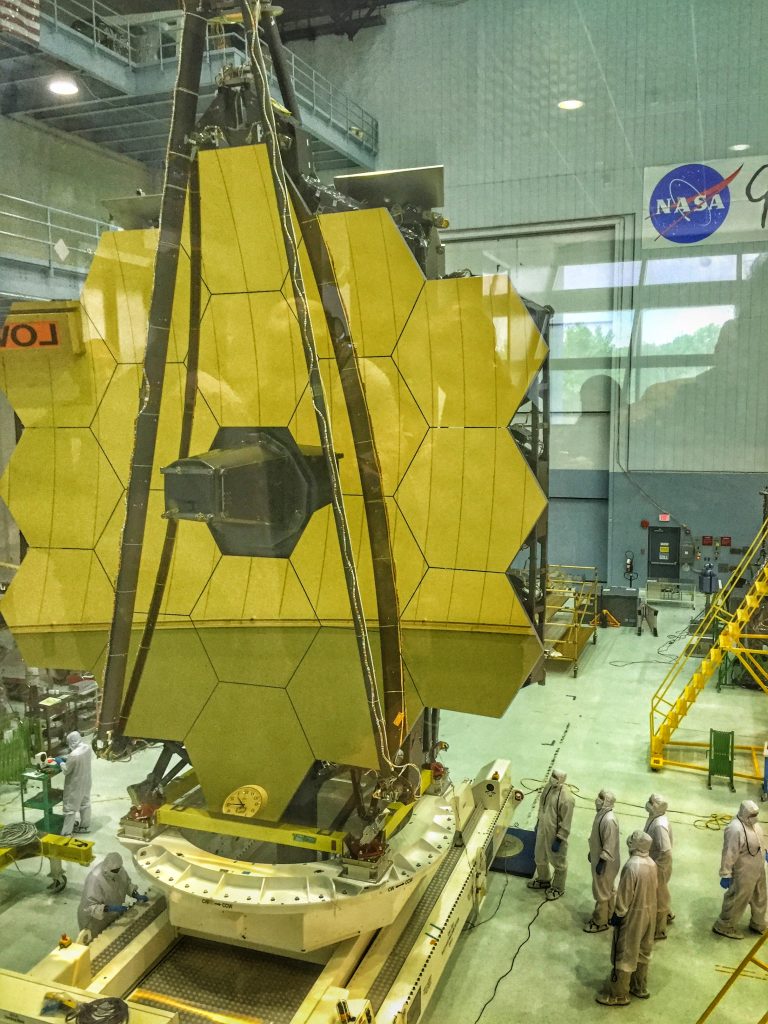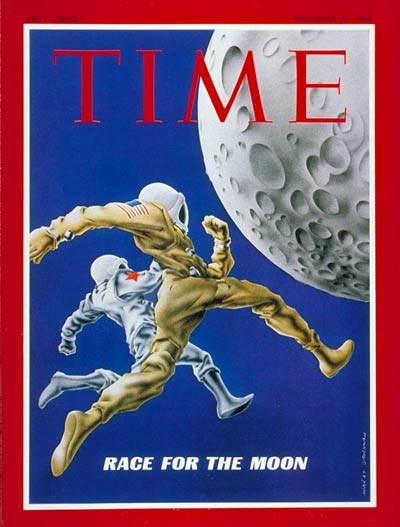Welcome back to Spaceflight Insight: your weekly dose of digestible space news.
Our first story this week is a callback to our previous Spaceflight Insight issue. On the evening of March 1, 3 astronauts and a cosmonaut boarded the SpaceX Dragon 2 capsule atop a Falcon 9 Block 5 rocket.

The crew consisted of NASA Astronaut Stephen G. Bowen, NASA Astronaut Warren Hoburg, Russian Cosmonaut Andrey Fedyaev, and UAE Astronaut Sultan Alneyadi. At 9:34 p.m. PST the rocket came to life with a trail of flames.

After the first stage of the rocket (the lower ¾) used most of its fuel, the second stage (the upper ¼) ignited its more efficient vacuum engine, pushing the capsule to orbit. The first stage then completed its landing burn landing on a barge in the Atlantic Ocean.
This mission is the 7th NASA funded crew launch to international space using SpaceX’s latest crew capsule. The Commercial Crew Program is a program NASA has used to fund commercial options for spaceflight meaning that NASA has to rely less on Russia to send its astronauts to space
Next up, some good space news from Japan. On Feb. 28, the Japanese Aerospace Exploration Agency announced that it had selected 2 new astronauts to start training. As the first candidates in 14 years to be selected, 46 year old Makoto Suwa and 28 year old Ayu Yoneda will likely be the first non-NASA astronauts to step foot on the moon.
These astronauts were selected to support NASA’s Artemis program to send people back to the Moon. As a part of the Artemis Accords, a treaty signed by participating countries, for monetary and technological support for the lunar Gateway station, NASA will send JAXA astronauts to the surface of the moon. According to JAXA, these astronauts will step foot on the moon “by the latter half of the 2020s”.
Back to NASA projects, the James Webb space telescope that launched in 2021 has made a groundbreaking discovery that may change the cosmological model of our universe. Using its beyond infrared imaging technologies, James Webb is able to look at light emitted a mere millions of years after the big bang.

Recently it has observed galaxies that shouldn’t exist. These six galaxies that Webb recently discovered formed around 500 to 700 million years after the big bang.
While this is a huge timeframe in terms of humanity, on the timescale of the universe this is extremely early.
These galaxies formed very early compared to current cosmological models. What this means for our understanding of the universe is unknown, but is being looked into further.
[Falcon News Note: This next section contains opinions and views of the writer. These opinions do not reflect the opinions and views of EHS Falcon News.]
Our final story from this week’s news will have a huge impact on human spaceflight.
The China National Space Agency (CNSA) announced this week that by the year 2030 they will put a Chinese Taikonaut (astronaut) on the surface of the moon.
This is a hugely influential move for the world of spaceflight. Up until now the only space programs that have had the aim to put a person on the moon have been from the Soviet Union, and the United States.
According to CNSA, the agency plans to make a super heavy launch vehicle to put payloads into space needed to explore the moon. This rocket, the Long March 10, will be among the heaviest of launch vehicles ever made.
So, why is this so influential for human space exploration?
Ego. Humans love to compete, and a competition like this has been seen before between the United States and the Soviet Union during the Space Race. In my opinion, competition like this is highly beneficial for humanity as a whole. Wanting to be #1 will allow NASA to receive funding like it has never seen before.

The best part about this competition is that while relations between China and the United States are not great, it’s not as bad as it was between the United States and Soviet Union. Instead of a competition over developing missile technology, it is a race to push humanity further into the cosmos.
While cooperation in space is ideal, competition has its benefits. If China continues to push its space program and complete its goals, a new space race seems like it is on the horizon along with the Moon and Mars.
Thank you for reading this week’s edition of Spaceflight Insight. I hope to make these digestible bits of spaceflight news better, so If you have any aerospace questions or some feedback, don’t hesitate to let me know. Contact me at codyeutsler@gmail.com.
As always, fly safe.



